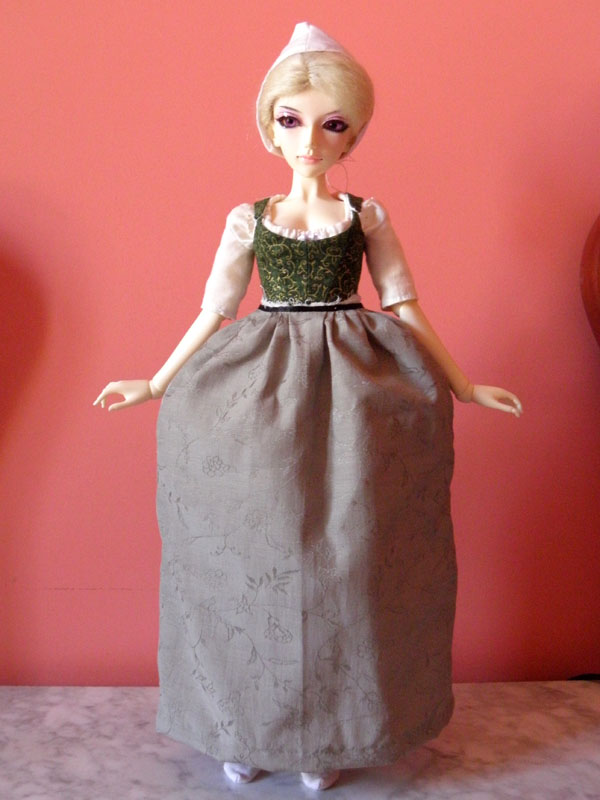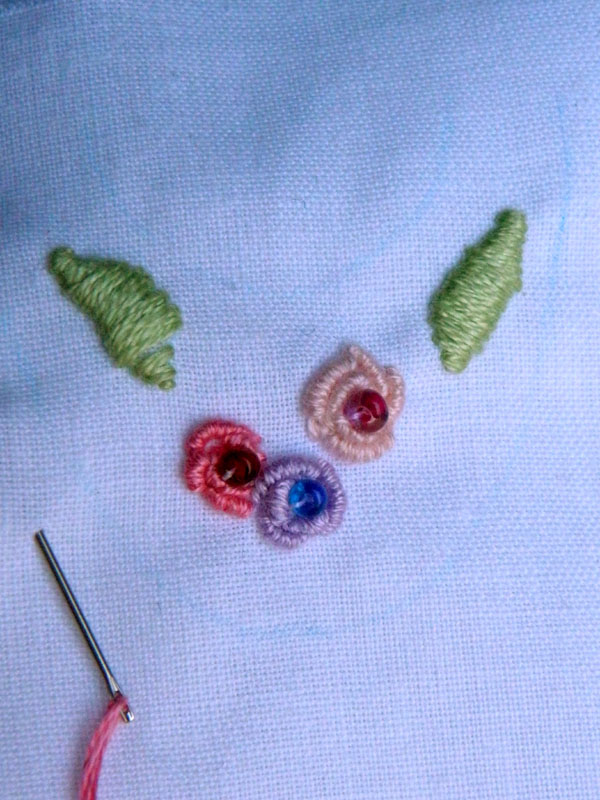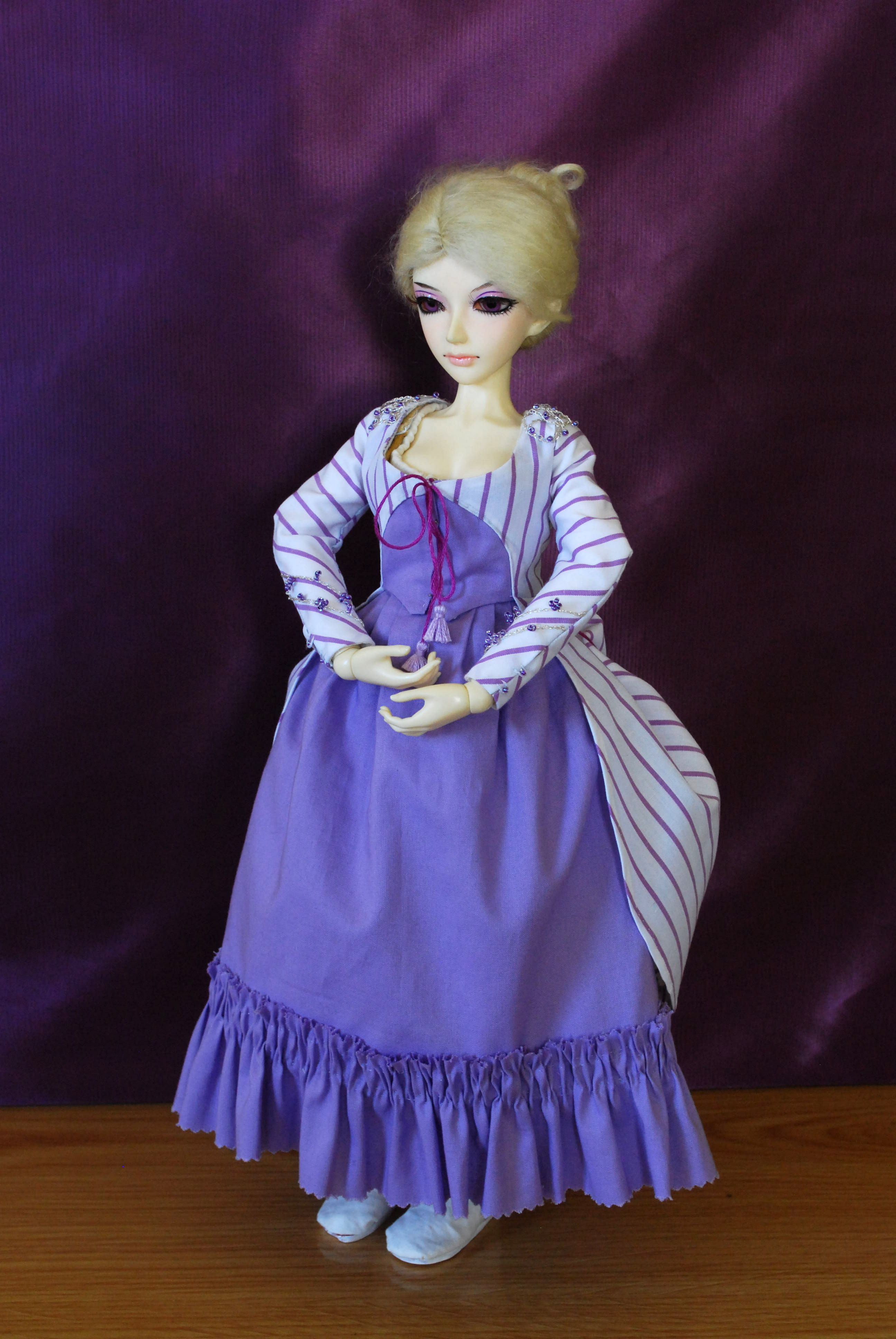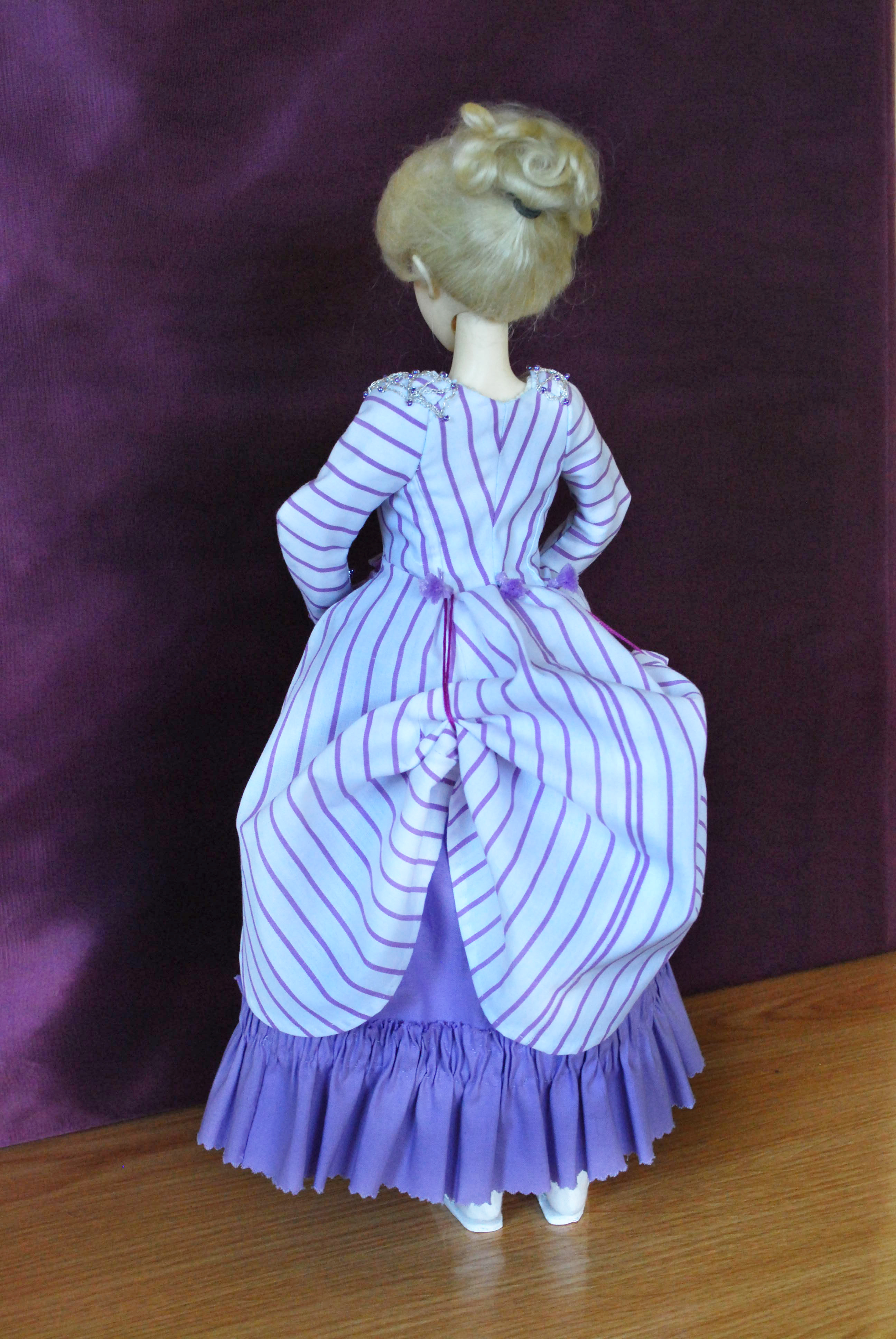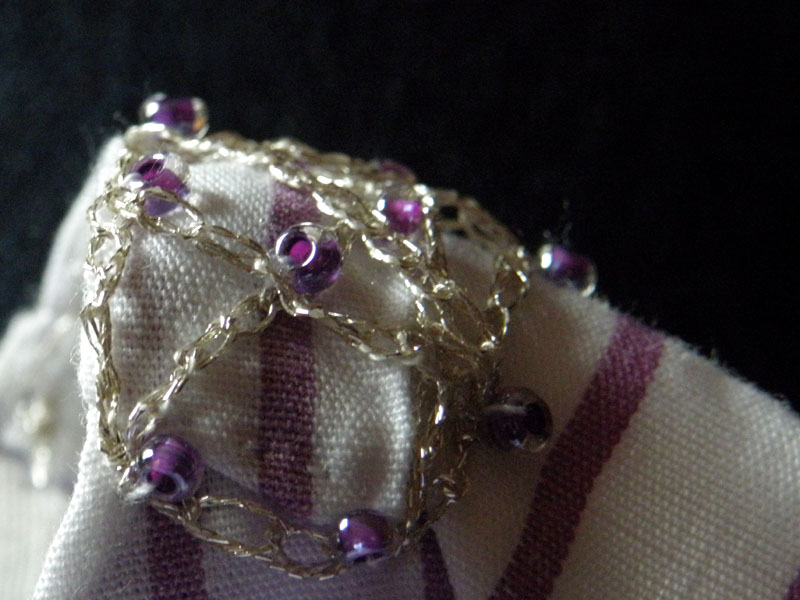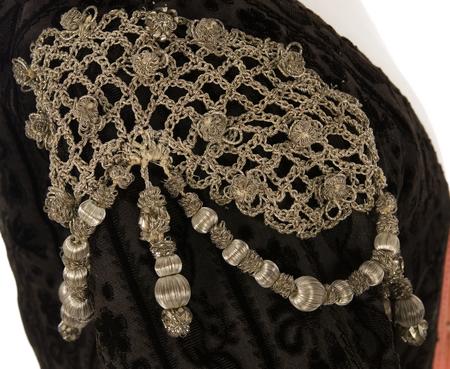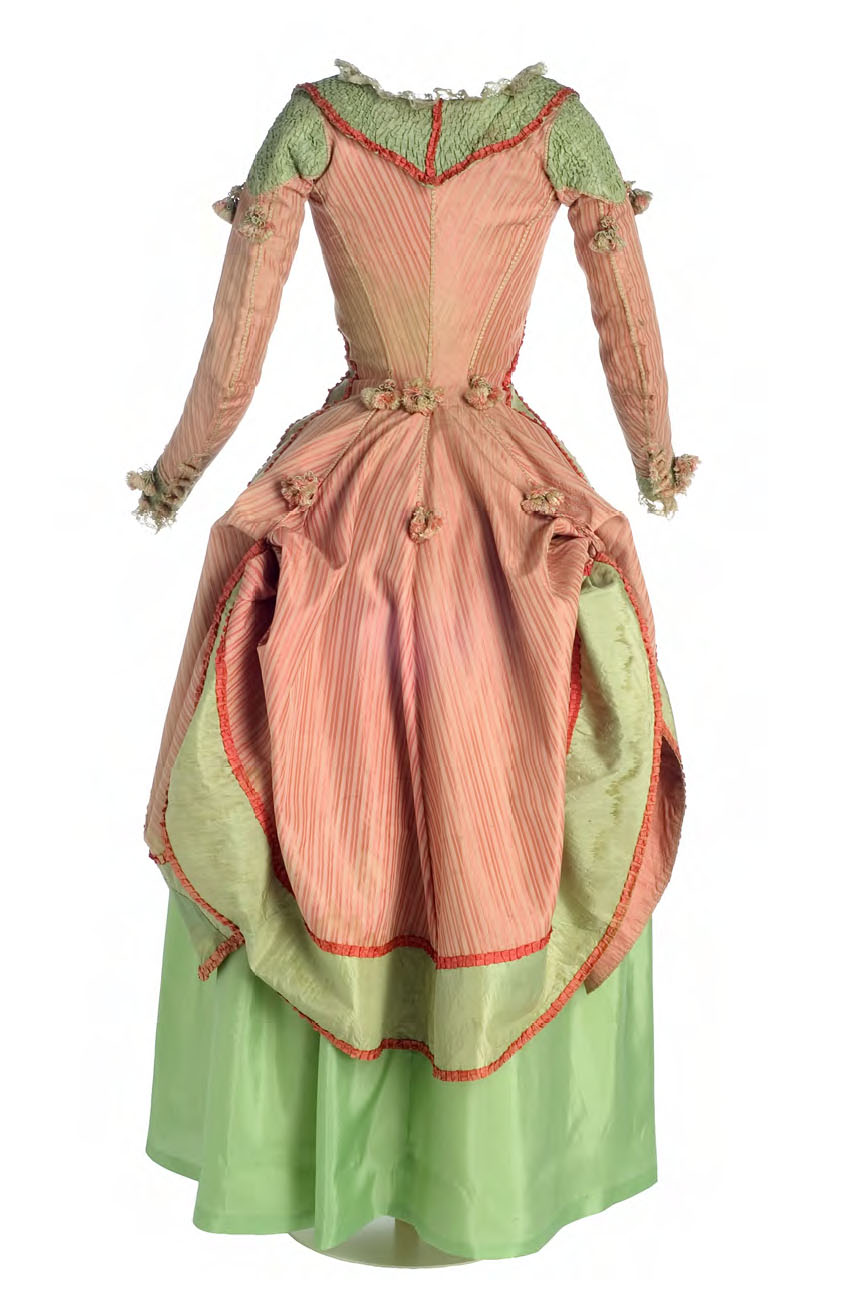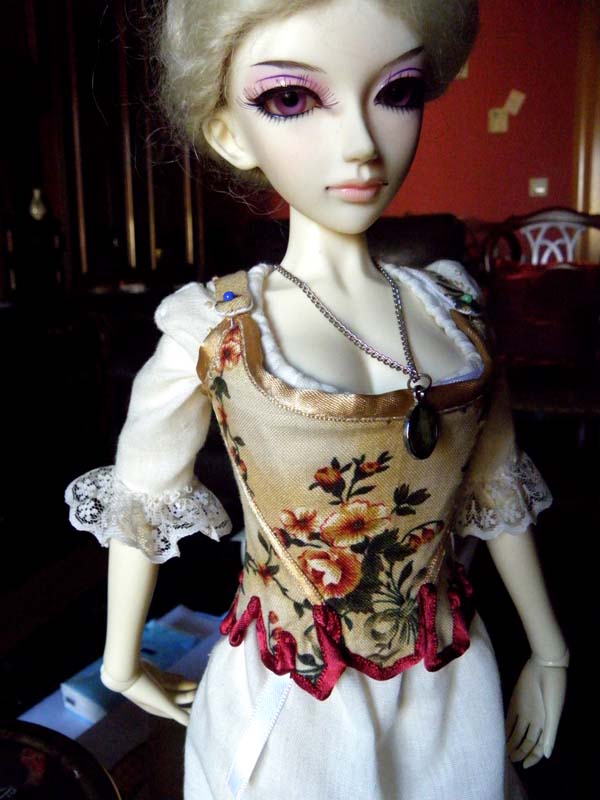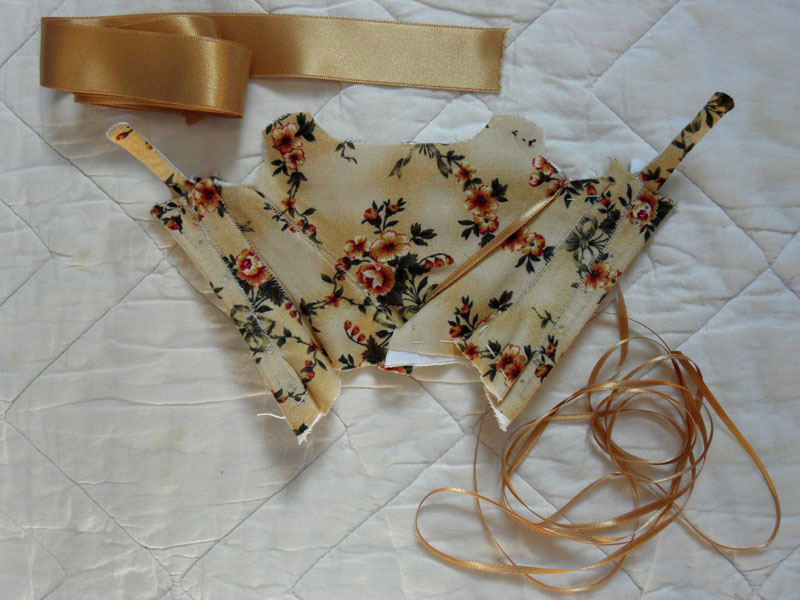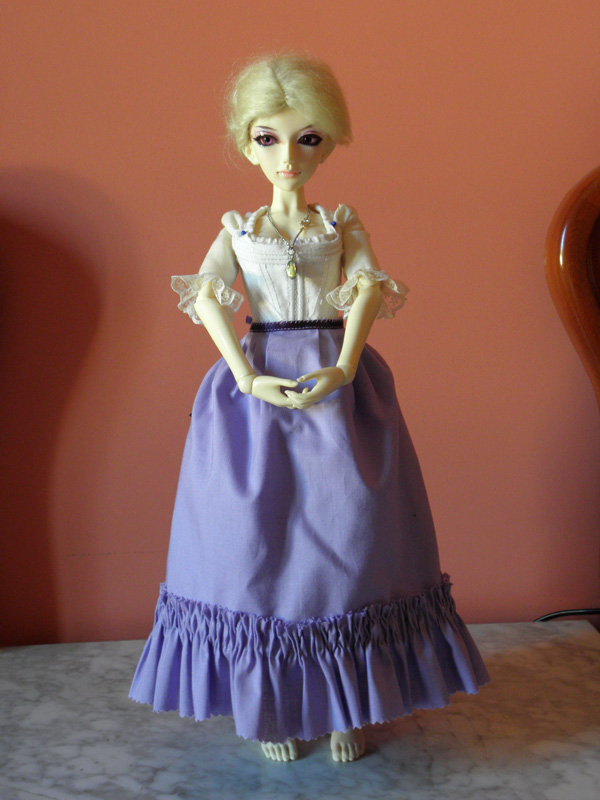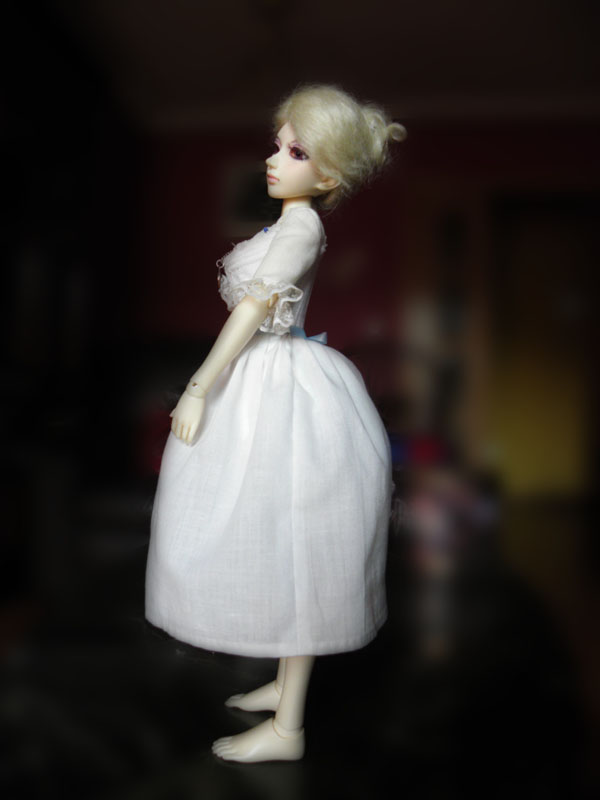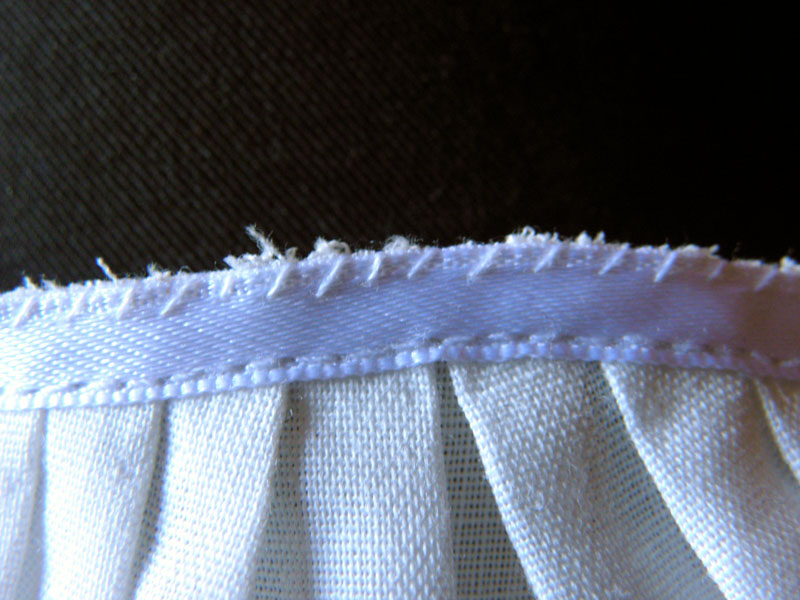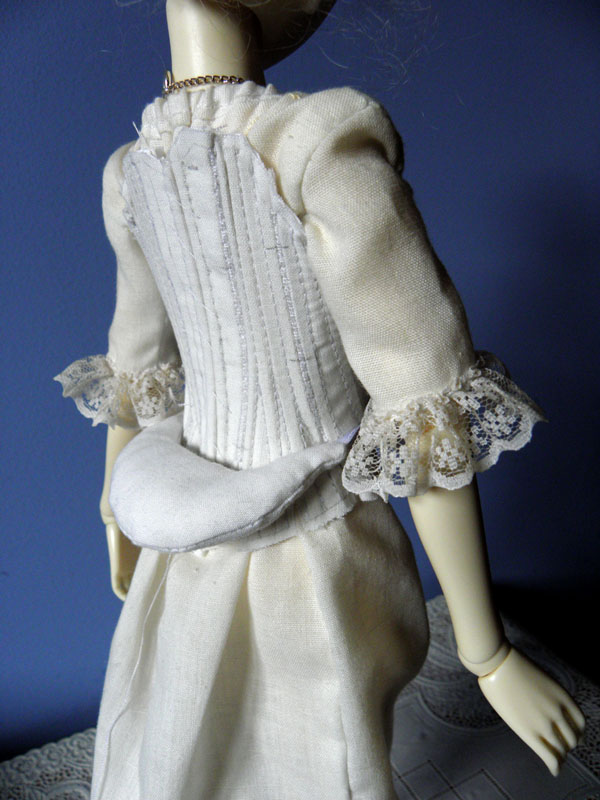Había tenido este proyecto abandonado mientras trabajaba en otras cosas, pero al final he podido volver a ponerme con él y está casi acabado.
La enagua y la falda han sido fáciles de hacer porque llevan el mismo patrón y ya había hecho las de la polonesa.
Para la media bata propiamente dicha el patrón es el mismo que el de la cotilla verde, pero transformado: primero monté una mitad en papel, le hice una sola costura en el lateral y añadí entre las costuras laterales y la de la de la espalda suficiente ancho para hacer los pliegues de las caderas y de la espalda, según los patrones de Patterns Of Fashion 1 para el forro y el exterior. Lo difícil aquí fue pensar cómo montar el forro en la media bata, porque la técnica es bastante diferente de lo que se hace hoy en día; por suerte encontré unas explicaciones en la web de Koshka the cat (Blue printed cotton 1780s Gown) que servían para mi proyecto.
Ahora mismo aún me falta hacer los pliegues de la espalda, rematar el cuerpo y montar las mangas. Por suerte no tendré que hacer otro patrón para éstas últimas porque ya lo tengo gracias a un error en la polonesa (olvidarme de que el diseño llevaba manga larga y hacer una manga corta antes de darme cuenta XD).
Por cierto, al final decidí usar como forro tela de algodón blanca en lugar de la de cuadros que enseñé en el flickr porque era más fácil de controlar 🙂

